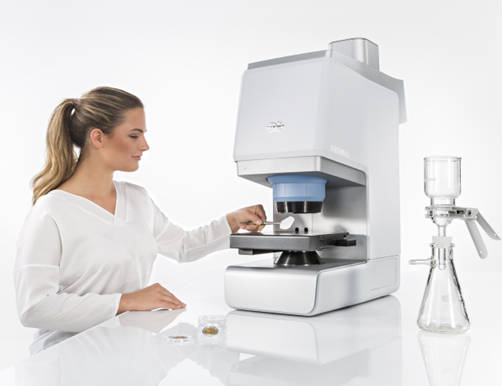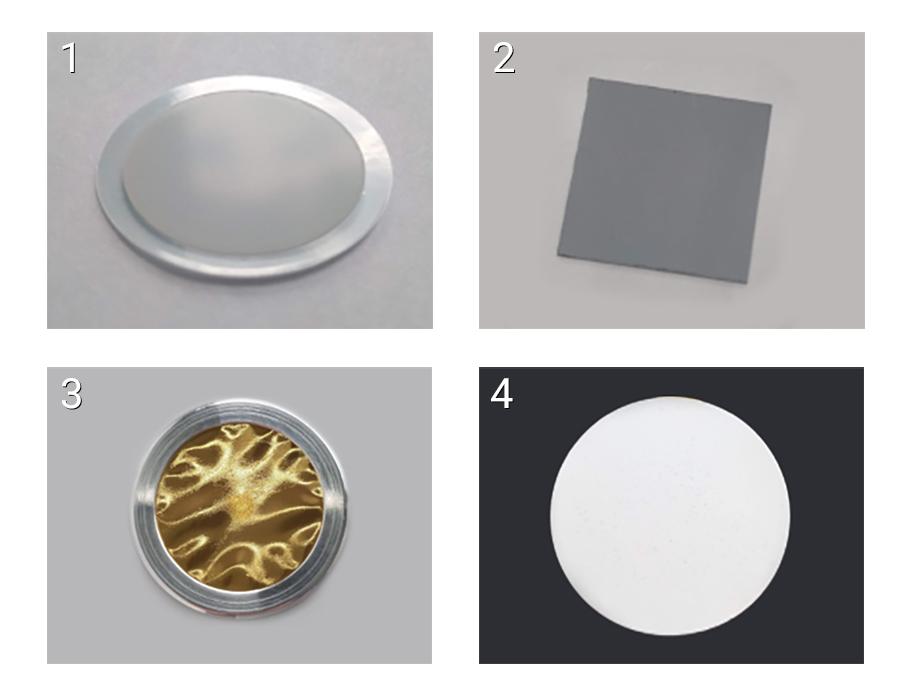The filter material to analyze particulate matter with Raman or FTIR microspectroscopy plays a vital role. Their simple task is to filter liquids to isolate solids onto filters – but as soon as you introduce spectroscopic methods, the requirements on the filter increase drastically. But let’s start at the beginning: Which filters are at our disposal, and how do we select the right one for our needs? Do we have to ask the Mirror on the wall from the Snow White fairy tail? No, of course not! We have all the answers compiled for you below.

Filter materials for FTIR and Raman
For FTIR analysis, the choice between measuring individual particles (with a low particle count) or the entire filter (with a high particle count) guides our filter selection. Nitrocellulose and Glassfiber filters are good options when we have a low particle count and want to go for an ATR measurement.
Anodisc (Al2O3) and Silicon filters are also versatile options suited for both high and low particle count scenarios. They are ideal for transmission measurements. Silicon and gold-coated filters step up to the plate when it comes to reflection measurements.
When shifting our focus to Raman analysis, it’s all about particle recognition through visual imaging and subsequent particle measurement. Here, we seek filters with planar surfaces, minimal fluorescence, and negligible Raman signals. Here, gold-coated and silicon filters emerge as the top contenders.
For both techniques it is advised to use a smaller filter diameter to reduce the measurement time.
FTIR filter materials
For FTIR analysis, a range of filter options is at your disposal:
- Aluminium Oxide (Anodisc): These filters cater to transmission mode FTIR with a spectral range of 4000 – 1250 cm-1. They are available in 25 or 13 mm diameters with a 0.2 µm pore size.
- Silicon Membranes: Ideal for both reflection and transmission modes. They come in various filter and pore sizes, featuring a planar surface and darkfield compatibility.
- Gold filter: Gold filters are used in reflection and transflection mode. They cover the full MIR range and are darkfield compatible.
- (Nitro-)Cellulose / Glassfiber: They are cost-effective and easy to handle. These filters are best suited for single-point FTIR-ATR analysis. However, they are not suitable for imaging as well as transmission and reflection measurements. You can find them in 25, and 13 mm diameters.

Raman filter
- Silicon Membranes: Porous silicon substrates allow direct particle measurement on the substrate, offering various pore and filter sizes. Smaller sizes are preferable for reduced measurement time. Darkfield compatible
- Gold Coated Filters: These are typically gold-coated polycarbonate filters that offer easy particle identification. It allows direct particle measurement on the substrate and is darkfield compatible.
Example 1: Filter in microplastics FTIR analysis
When it comes to the filter choice, Bruker has a clear suggestion for microplastics FTIR analysis: Anodisc Aluminium oxide filters.
They are currently the predominant filter material in microplastics research. Why? Because they show almost no loss in IR transmission in the important spectral region and are suitable for transmission FTIR imaging and mapping. With their very small pore size they catch all relevant microplastic material. Apart from that, the Anodisc filter enables direct sample measurements on the filter.
In addition to the Anodisc filters, gold coated filters are also a good choice. They offer the full MIR range and on top of that they are darkfield compatible and offer good visual contrast. However, they are expensive and since they are only used for transflection measurements, there are other challenges.
As the IR radiation has to pass a particle twice in a transflection measurement, the total absorption of IR light is also reached twice as fast. This can lead to loss of particle information and happens especially for large particles. In addition, you run the risk of finding disruptive artefacts in your spectra. That in turn makes comparison with a library difficult.
Example 2: Filter in pharma failure analysis
Maintaining the purity of a medication is essential to ensure its safety and effectiveness. The presence of particles or impurities can trigger physical and chemical changes in the substance, leading to undesirable consequences such as irritation, inflammation, or allergic reactions. Additionally particles can also result in degradation or a decrease in effectiveness of a medication over time. To prevent these issues and ensure the substance’s quality, Raman microscopy is utilized for thorough monitoring and analysis.
While both silicon membranes and gold coated filters are a good choice, there is one thing to keep in mind. While gold is Raman inactive, the silicone coated filter would create a Raman signal. Thus creating a mixed spectrum of the filter and the sample. This makes the analysis more complex, as a mixture analysis must be conducted for each particle. So if you need to carry out the analysis fast and effectively, a gold filter is the better choice.
Conclusion
The choice of filter in FTIR and Raman spectroscopy depends on your analysis approach and the specific requirements of your experiment. Whether you’re scrutinizing individual particles or the entire filter, there’s a suitable filter waiting to enhance the accuracy and reliability of your results.
Did we raise your interest in Microplastics analysis? Then have a look at our blog about the use of AI in FTIR Microplastics analysis.








